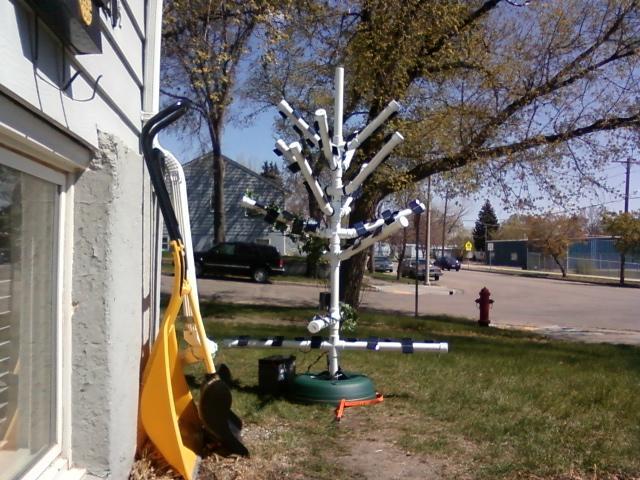New solar tree design promises ease and efficiency

Basic solar panels baffled Jesse Smith, a CEO and owner of Ifusionsoft, a small software development company. it seemed like basic science that panels only worked efficiently for part of the day as the sun moved across the sky. He knew people could buy additional panels to have them facing multiple directions, but that seemed expensive. It appeared as if a lot energy was lost when the sun hit an angle different from the way a panel was set up. Smith, then took the idea of a solar tree, a concept developed a few years ago used by a few companies, and tweaked it to create his own design fused with computer science.
For the past year Smith has been refining the architecture of a new more efficient way for people to use solar energy. He recently developed a prototype and is working on finding investors to market it commercially, he said.
Smith’s tree stands 6-feet tall and is 4-feet wide, small enough it could sit inside by a window and is easily moved. It weighs only 16 to 25 pounds.
The “leaves” of the tree are solar panels and the “branches” can twist to face all directions. The tree has a spiral pattern that collects light from all angles. The design also allows wind flow between the solar panels. On hot days, traditional panels don’t work as well when they overheat. The design allows air flow, which helps the panels avoid overheating, he said.
The branches are easy to adjust by hand but Smith is also creating robot holders that can be controlled remotely by a smart phone to change the branch angles. The tree can also be controlled by a computer program that allows users to set when they want the branches to move. The tree can be adjusted to generate the power to move the robots that would adjust the branches, he said.
The solar trees can be built in different sizes or multiple trees can be wired together for more power as needed, he said.
While there are other versions of solar trees, Smith feels his company’s is different in its light-weight design, scale and ease of adjusting the panels.
He’s currently working on finding investors to help bring his prototype onto the market.



